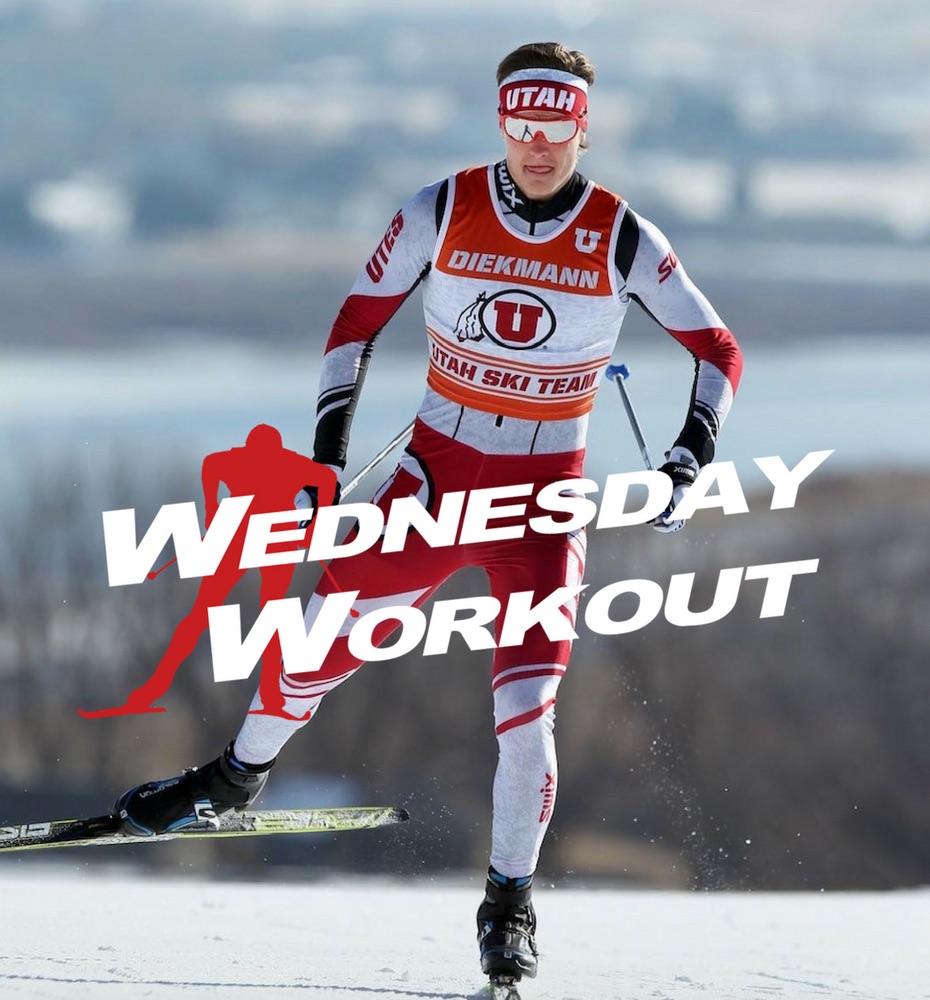
This week, FasterSkier caught up with Bozeman, Montana, native Logan Diekmann, who’s entering his junior year at the University of Utah. Diekmann, 21, is spending this summer training in Salt Lake City, taking summer classes toward a degree in mechanical engineering.
Diekmann grew up in Bozeman, skiing with the Bridger Ski Foundation (BSF) through elementary, middle and high school. After graduating as Bozeman High School’s valedictorian in 2015, he took a gap year with BSF. He applied to a number of schools, with the University of Utah eventually winning out.
His first season as a Utes skier, he qualified for NCAA Championships as a team alternate. Earlier that year, he had two top-15 finishes and a fourth place in the Seawolf Invite freestyle sprint.
This past January, Diekmann advanced to the heats for the first time at U.S. senior nationals, placing 14th overall in the skate sprint. His college racing progressed from there, as he notched five top-10’s and eight top-15’s on the Rocky Mountain Intercollegiate Ski Association (RMISA) circuit.
“There was a lot of improvement from a fitness standpoint and from racing maturity standpoint,” Diekmann reflected on last season.
While he was not selected to travel to 2018 NCAA Championships, he was pleased with his improvement from his freshman to sophomore years.
“I mean, I was definitely disappointed not getting to go to NCAA’s this year, but looking back on the season, there were a lot of good takeaways,” he said. “My FIS points dropped 125 at the start of the season down to 73 by the end of the season.”
According to Diekmann, much of this development came from his summer training sessions with Salt Lake City native and recent Montana State University graduate, Karsten Hokanson, as well as his Utah teammates.
“Freshman year alone, training with guys who were four to six years older than me was kind of eye opening and hard and super challenging,” he said. “I get to ski with some of the Norway and Sweden and Europe’s second-tier national skiers that didn’t get to race the Olympics. I mean, I’ve definitely never been pushed the way I have here.”
Many of his current college teammates hail from Scandinavia, which he views as a positive, though there is some controversy over college ski teams pulling foreign athletes, particularly when it comes to NCAA’s.
“I think if I was not an athlete on the [NCAA Division 1] circuit, I would be kind of frustrated with the situation,” Diekmann said. “I’d be like, ‘What the hell? These foreign skiers are coming in and they’re taking eight of the All-American spots at NCAA’s. It takes spots away from domestic skiers who are trying to ski in college, which is super tough.
“So I understand where other people are coming from when they have issues with it,” he continued. “But as an athlete, I think that there are very few downsides for me personally because I do get to train with really fast skiers who have skied on the national level in Europe or the world level on the World Cup. The insight they have and the training advice they have is pretty cool.”
A five-time Junior Nationals competitor, Diekmann also qualified for and raced at 2017 Junior World Championships in Midway, Utah. There, he placed 27th in the classic sprint.
This summer, he’s training with conglomerate of skiers, including Utah teammates Leah Lange and Jacob Engström, Hokanson, Daniel Fisher, Dartmouth’s Taryn Hunt-Smith, Brenna Egan of the University of New Mexico, and Ben Berend of the U.S. Nordic Combined Team.
lioresal, buy erythromycin online, buy ofloxacin online
“There’s always somebody to train with, which is sweet,” Diekmann said. “It’s not ideal not having a coach, but Karsten’s dad, Bill, used to coach the Wasatch team up in Park City, so he joins us for workouts occasionally, too, and can give technique advice and take video.”
Asked to share his favorite workout, Diekmann chose hill repeats, which he does with Hokanson at least once a month at Sugar House Park in Salt Lake City.
“It’s so simple; you can do it anywhere — I mean, out your backdoor if you’re in the right spot,” Diekmann said. “The other nice thing about this is you get a combo of hard L4 [Level 4] intensity, but you’re also getting in snappy, quick bounding that really activates those fast-twitch muscles that keeps you speedy and focuses on power.”
The Workout: Level 4 hill-bounding repeats/intervals
Terrain: Uphill, about 40 meters in length
“Not super steep, but steep enough that you can bound pretty hard,” Diekmann explained.
Warmup: 35 minutes with Level 3 interspersed toward end
The set: 4 x 10 hill repeats
- Should take about 20 seconds to get uphill
- Walk back downhill (heart rate won’t get below 150 bpm by the time you get back down)
- Usually takes about one minute to bound up and walk back down
“It’s a nice way to incorporate L3 and L4 into one set of intervals,” Diekmann said.
Cool down: 20-30 minutes easy
Total time: Approximately 1 1/2 hours
Gabby Naranja
Gabby Naranja considers herself a true Mainer, having grown up in the northern most part of the state playing hockey and roofing houses with her five brothers. She graduated from Bates College where she ran cross-country, track, and nordic skied. She spent this past winter in Europe and is currently in Montana enjoying all that the U.S. northwest has to offer.



